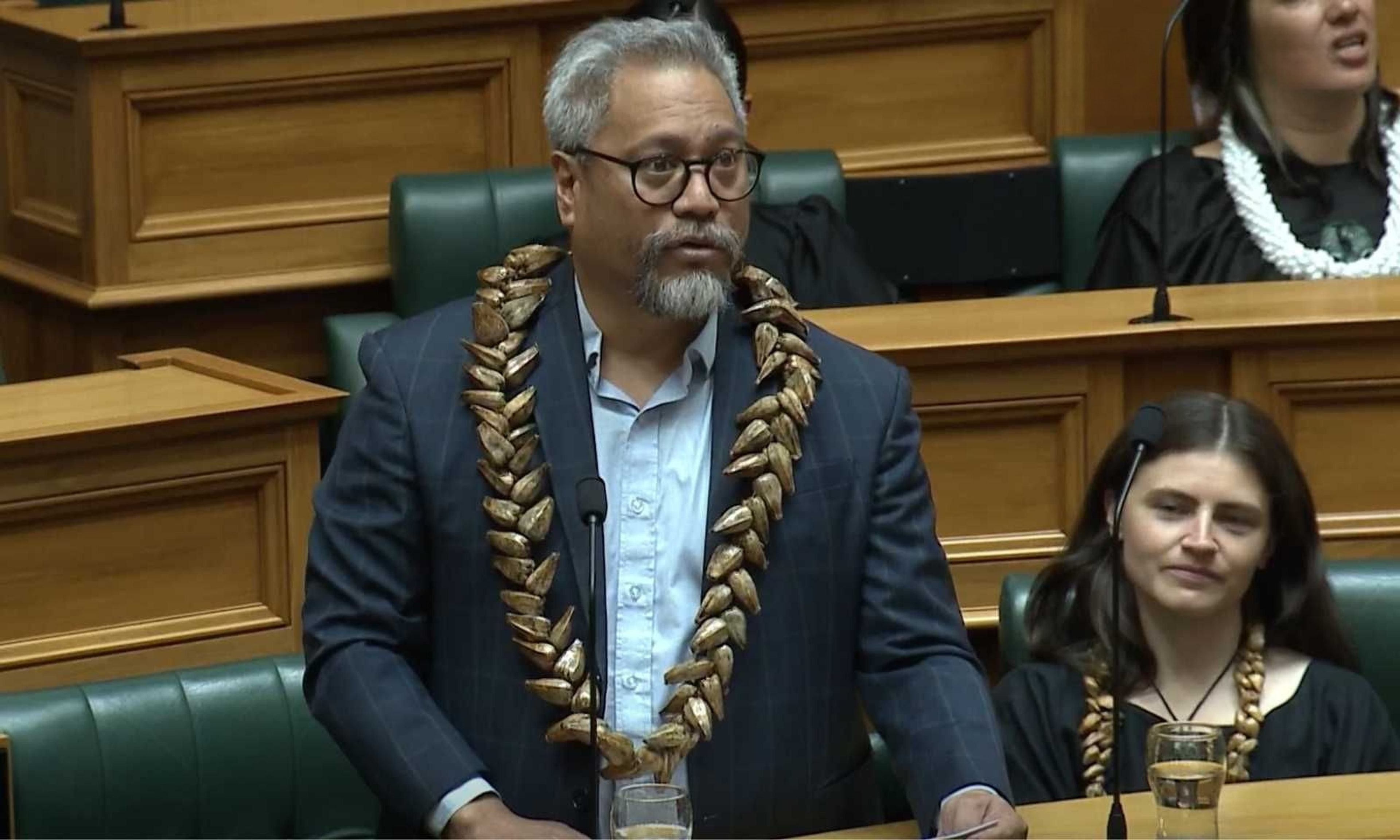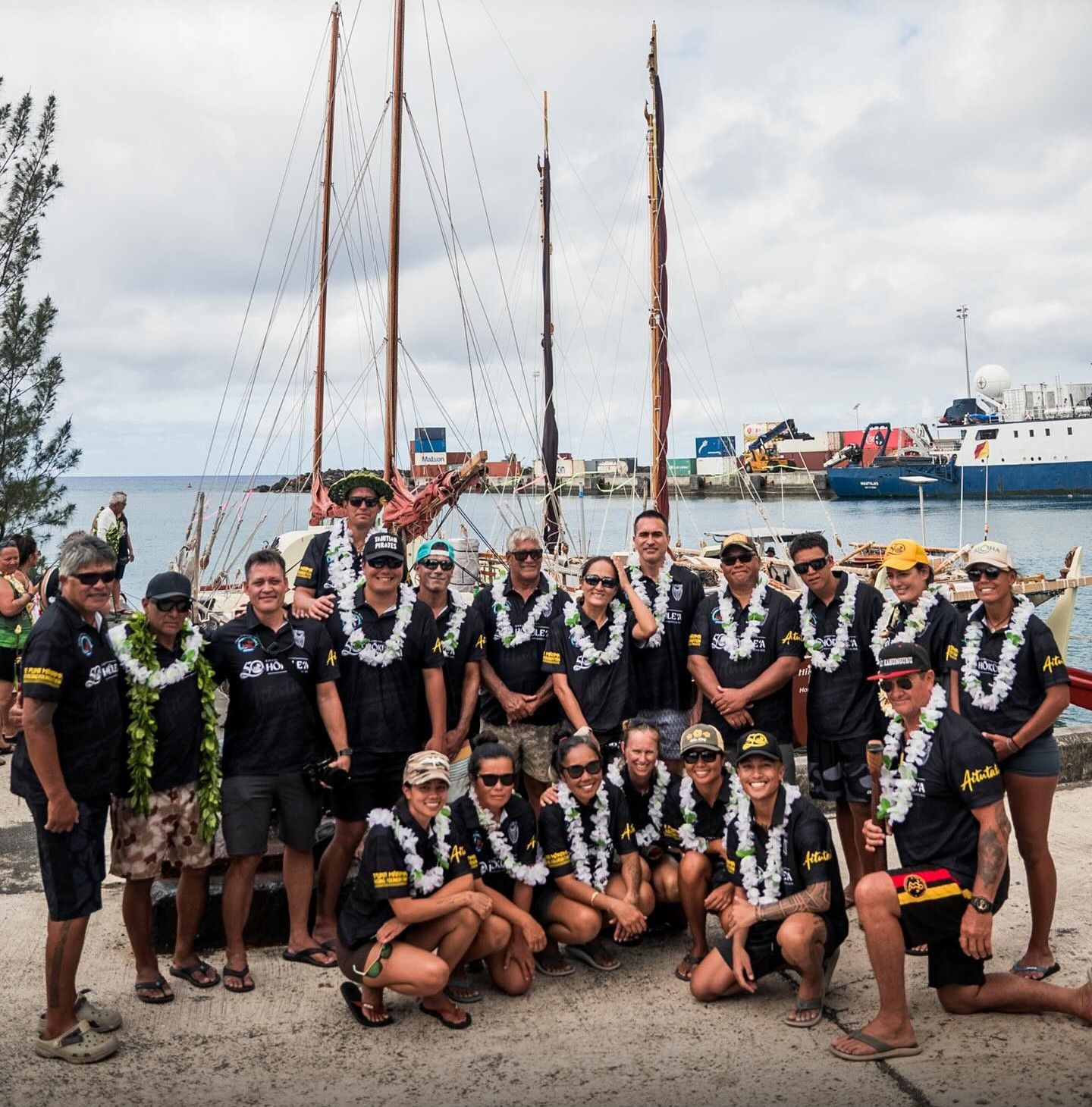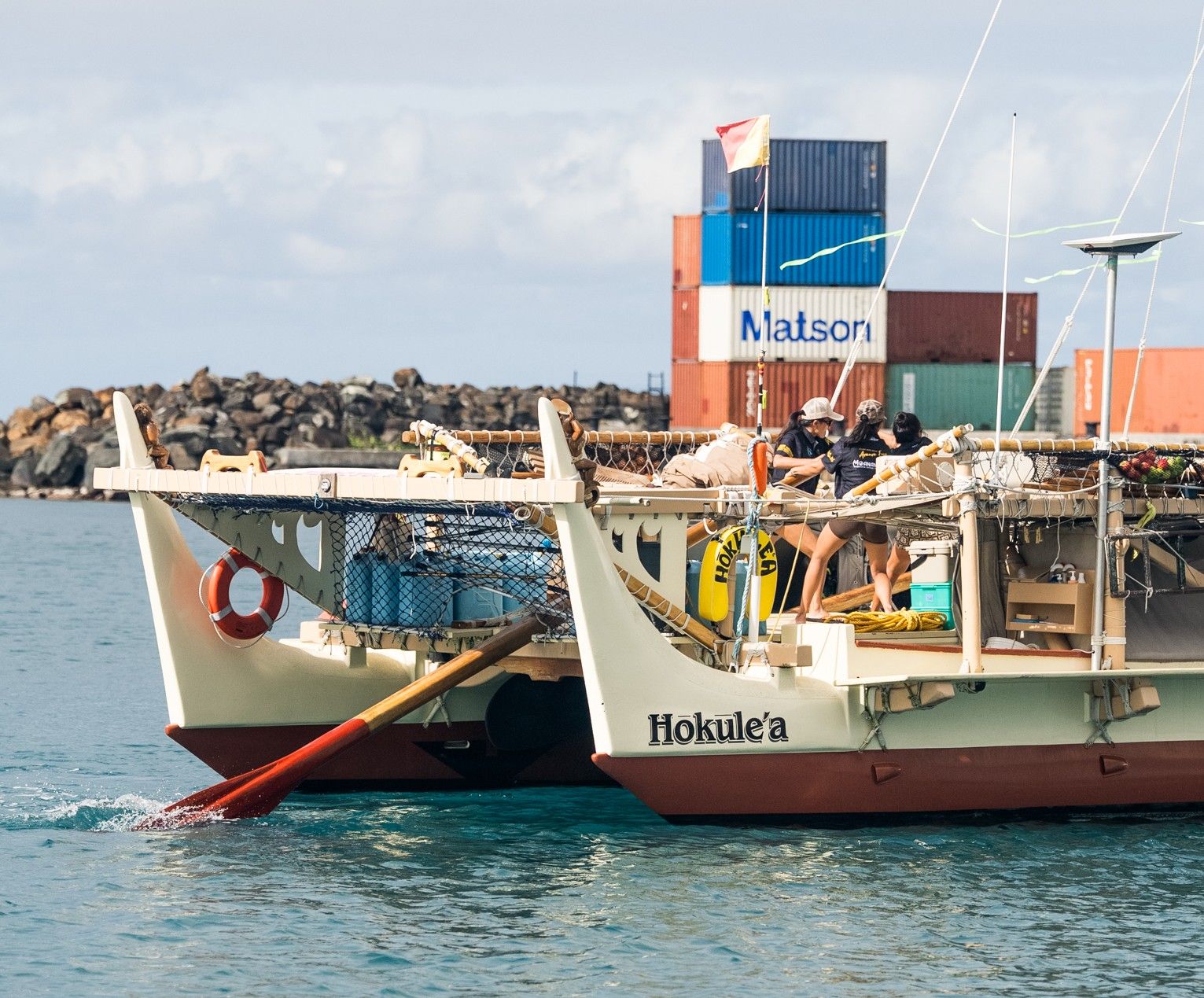

Iconic double hulled canoes set sail Rarotonga to Waitangi, retracing an historic voyage to Aotearoa 40 years ago.
Photo/Polynesian Voyaging Society/Jonathan Salvador
Iconic Polynesian canoes set sail for Aotearoa, 40 years after historic voyage
Hōkūleʻa and Hikianalia are sailing from Rarotonga to Waitangi, using traditional navigation by stars, ocean swells, and bird movements to retrace their first journey to New Zealand.


Greens unfazed by poll drop, vow to keep pushing government


Will’s Word: Willis vs Richardson, the economic showdown we didn’t see coming

From his bedroom to global playlists, Tongan Trixx finds his voice

Greens unfazed by poll drop, vow to keep pushing government


Will’s Word: Willis vs Richardson, the economic showdown we didn’t see coming
The Pacific Ocean is once again carrying two of the world’s most iconic voyaging canoes to Aotearoa New Zealand.
The Hōkūleʻa and Hikianalia, traditional double-hulled canoes from Hawai‘i, are making the 3200-kilometre journey from Rarotonga to Waitangi, with landfall expected by mid-November.
The waka left the Cook Islands this week, with their arrival at Waitangi set to mark 40 years since the Hōkūleʻa first touched the shores of Aotearoa, a milestone that continues to unite Pacific voyaging communities across generations.
The journey is part of the Moananuiākea Voyage, a multi-year circumnavigation of the Pacific designed to connect Polynesian communities through traditional navigation, cultural exchange, and environmental stewardship.
But for those aboard, this leg is more than a voyage. It’s a homecoming.
Nainoa Thompson, chief executive of the Polynesian Voyaging Society, says Aotearoa, land of the long white cloud, is an extraordinary place.
“It is a powerful definition of our country, Polynesia. They reminded us about how much and how connected they are to their earth, to their oceans, to their place, and the things that they fortify in their world that they bring into the 21st century.
“We want to use this time very wisely, to bring our Polynesian people together, especially from the voyaging communities, to train together, work together, and look at the transition of leadership for the next 50 years.”
When Hōkūleʻa last visited in 2014, thousands gathered across Aotearoa to welcome the canoes.
But this year’s arrival is especially significant as it will include six months of cultural, educational, and training activities, as well as a series of events celebrating the enduring relationship between the Hawaiian and Māori voyaging families.
Weather permitting, the canoes will sail into Te Tii Bay in Northland on 14 November, where a pōwhiri at Te Tii Marae will welcome the crew.
The following morning, a dawn ceremony will unveil a carved pou representing Ngāti Ruawāhia, and later that day, a 40th Anniversary Tribute will honour voyaging pioneers Sir James Henare, Sir Hector Busby, and Myron “Pinky” Thompson, Nainoa Thompson’s late father and a key leader in the Polynesian Voyaging Society.

The crew will be using using traditional methods of navigating by the stars, ocean swells, and bird movements to reach New Zealand. Photo/Polynesian Voyaging Society/Charlee McLean
The crew will use traditional methods of navigation, including the stars, ocean swells, and bird movements.
Captain Lehua Kamalu, who is leading this leg of the voyage, described the emotional farewell as the canoes left Rarotonga, after a two-month stay.
“We had a beautiful farewell from the community and children as we headed out around three or four o’clock,” she says.
“Everyone’s focused on getting into that space of being at sea, being ready for whatever the Moana (ocean) offers.”
Originally, the Moananuiākea route was planned to stop in American Sāmoa, Sāmoa, and Tonga, but shifting weather patterns prompted the team to sail directly to Aotearoa instead, the same route taken in 1985.
“There’s meaning in that. It honours the original navigators who first brought the canoe to New Zealand, the people who showed us what was possible,” Thompson says.
For Cook Islands navigator Tua Pittman, who has guided voyaging canoes across the Pacific for decades, Hōkūleʻa’s return to Aotearoa carries both pride and responsibility.
“Hōkūleʻa started this whole movement of making our people believe that we were brilliant, that our ancestors were brilliant people," he told Cook Islands TV. "We’re reliving their movement, their sacrifice to keep their people alive.”
Pittman, who will rejoin the canoes when they arrive in Aotearoa, says the voyage represents more than history, it’s a living classroom for young Pacific navigators.
Once the canoes have completed their Waitangi ceremonies, they’ll sail south to Auckland, where they will be welcomed by Ngāti Whātua Ōrākei on 18 November.
The following day, Thompson is scheduled to speak at the World Indigenous Peoples’ Conference on Education (WIPCE), where he’ll reflect on the 40-year voyaging relationship between Hawai‘i and Aotearoa.
From there, the canoes will head north to Aurere in Northland, the homeland of the late Sir Hector Busby, the Māori Pwo (master) navigator and master waka builder whose work revived traditional voyaging in Aotearoa. His navigational school, Te Aurere, remains a cornerstone of Māori waka training.

Crew prepare the Hōkūleʻa for departure from Rarotonga. Photo/Polynesian Voyaging Society/Jonathan Salvador
After their Aotearoa engagements, Hōkūleʻa and Hikianalia will be dry-docked for maintenance and remain in New Zealand for about six months to wait out the cyclone season (from November to April) before resuming the Moananuiākea Voyage.
Their next destinations will include Tonga, Sāmoa, American Sāmoa, Melanesia, and Micronesia, continuing a 43,000-nautical-mile journey across the world’s largest ocean.